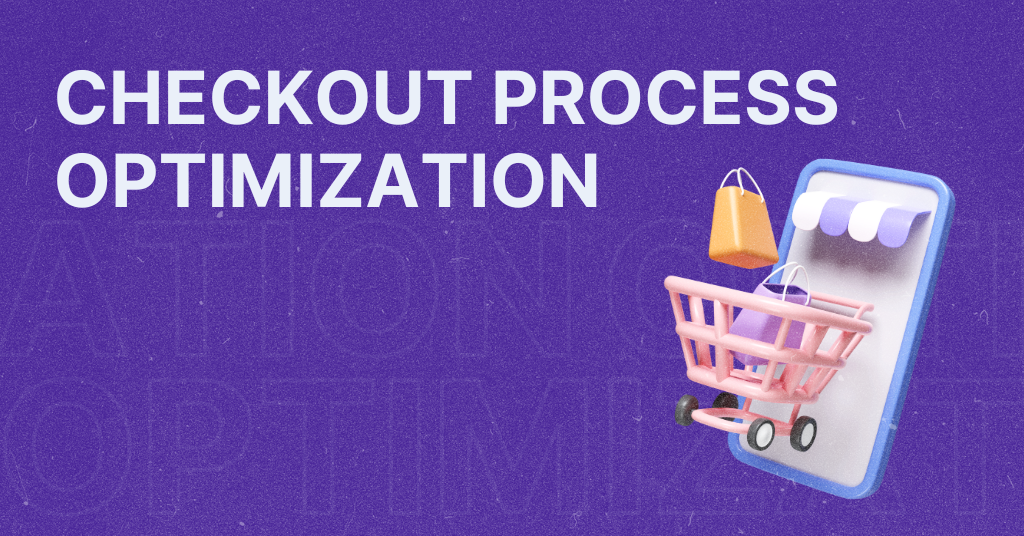
Mobile Retargeting Strategies: Re-engaging Abandoned Users
In today’s mobile-dominated world, where attention spans are short and competition is fierce, retaining users and keeping them engaged with your app or mobile website is more critical than ever. However, user abandonment is a common challenge faced by mobile marketers. Fortunately, mobile retargeting strategies offer a powerful solution to re-engage abandoned users and bring them back into the fold. In this blog post, we will explore effective mobile retargeting strategies in more detail to help you win back those users who have shown interest in your mobile app or website but haven’t converted.
Understanding User Abandonment
User abandonment is a prevalent challenge faced by mobile marketers, where users leave an app or website without completing desired actions, such as making a purchase or filling out a form. Common causes of user abandonment include distractions, complicated user interfaces, slow loading times, or unsatisfactory user experiences. Analyzing abandonment data and identifying key metrics provide valuable insights into user behavior and reasons behind abandonment. By understanding user abandonment, businesses can develop effective strategies to re-engage these users and improve conversion rates.
Analyzing Abandonment Data
Collect and analyze user data to gain insights into abandonment patterns.
Identify key metrics, such as bounce rates, exit points, and session duration, to understand where users are dropping off and why. You can read more about these metrics here.
Analyzing abandonment data is a crucial step in understanding user behavior and identifying the reasons behind user abandonment. By diving deeper into abandonment patterns and key metrics, businesses can gain valuable insights that inform their retargeting strategies.
Here are some useful tips and examples for analyzing abandonment data:
Identify Key Metrics
Start by identifying the key metrics that are relevant to your mobile app or website. Some common metrics to consider include bounce rates, exit points, session duration, and conversion funnels. These metrics provide insights into where users are dropping off and help pinpoint potential issues.
Example: If you notice a high bounce rate on a specific landing page, it may indicate that the page’s content or user experience needs improvement. By analyzing this data, you can take steps to optimize the page and reduce bounce rates.
Utilize Analytics Tools
Take advantage of analytics tools to collect and analyze abandonment data. Tools like Google Analytics, Mixpanel, or Kissmetrics offer robust features that allow you to track user behavior, set up custom events, and generate detailed reports.
Example: Google Analytics provides a Behavior Flow report that visualizes user navigation paths and highlights where users exit your app or website. By studying this report, you can gain insights into the most common exit points and optimize those areas for better user retention.
Segment Your Data
Segmenting your abandonment data based on various factors can provide deeper insights into user behavior. Consider segmenting data based on demographics, user types (new vs. returning), traffic sources, or specific actions taken within your app or website.
Example: By segmenting abandonment data based on traffic sources, you can identify which marketing channels are attracting users who are more likely to abandon. This information can help you optimize your marketing strategies or allocate resources to the most effective channels.
Conduct User Surveys or Feedback
In addition to quantitative data, qualitative insights from user surveys or feedback can provide valuable context to abandonment patterns. Ask users for their feedback on their experience, reasons for abandoning, or suggestions for improvement.
Example: Send post-abandonment surveys or follow-up emails to users who have abandoned their carts or left your app without converting. Their feedback can uncover usability issues, concerns, or obstacles that prevented them from completing the desired action.
Competitive Analysis
Analyze your competitors’ abandonment rates and user experience to gain insights into industry benchmarks and best practices. Understand what strategies or features they implement to retain users and learn from their successes or failures.
Example: Compare your app or website’s abandonment rates with industry averages or competitors in similar markets. If your rates are significantly higher, it may indicate potential areas for improvement or opportunities to differentiate your offering.
By effectively analyzing abandonment data, businesses can identify patterns, understand user behavior, and make informed decisions to optimize their mobile retargeting strategies. This data-driven approach enables businesses to address specific pain points, improve user experiences, and ultimately increase conversions.
Every customer counts – react accordingly
A brand’s success relies on converting customers into satisfied buyers. For many businesses, abandoned carts can be a frustrating setback. But not for the Tamban brand. They are using retargeting to recover abandoned carts and re-engage customers.

In addition to retargeting ads, Tamban took an extra step. They directly contacted customers who had abandoned their carts. Many customers had either forgotten about their carts or assumed they had already purchased. By reaching out, Tamban showed its dedication to customer satisfaction. Show customers how much you care about them.
The Power of Mobile Retargeting
Mobile retargeting involves re-engaging users who have previously interacted with your mobile app or website but haven’t converted.
It leverages user data and personalized marketing techniques to deliver targeted ads or messages to those users across mobile platforms.
Benefits of Mobile Retargeting
First benefit is that mobile retargeting will increase your conversion rates. By targeting users who have already shown interest, mobile retargeting can significantly boost conversion rates.
Second, mobile retargeting is there to improve user engagement. Retargeting allows you to reconnect with users and provide relevant, personalized experiences, fostering stronger engagement.
And the third benefit is cost-effectiveness. Retargeting often offers a higher return on investment compared to traditional marketing methods, as you focus on a warm audience that is more likely to convert.
Effective Mobile Retargeting Strategies
Implementing effective mobile retargeting strategies allows businesses to re-engage abandoned users and drive higher conversions by delivering personalized, relevant, and contextually targeted messages and ads across mobile platforms.
Segmenting Your Audience
Divide your audience into specific segments based on their behavior, interests, demographics, or stages of the customer journey.
Segmenting enables you to deliver highly relevant and personalized retargeting messages, increasing the chances of conversion.
Dynamic Retargeting Ads
Dynamic retargeting ads display personalized content to users based on their past interactions with your app or website.
Utilize dynamic ad platforms to automate the process of creating and delivering customized ads, tailored to each user’s preferences.
Personalize the ad creative, product recommendations, and offers based on the user’s browsing history or previous interactions.
In-App Notifications
Send push notifications or in-app messages to re-engage abandoned users.
Craft compelling messages that provide value, such as exclusive offers, personalized recommendations, or reminders about abandoned shopping carts.
Use deep linking to take users directly to relevant sections of your app or website to simplify their return journey.
Email Retargeting
Leverage email marketing to reach out to abandoned users who have provided their email addresses.
Create targeted email campaigns with personalized content, enticing subject lines, and clear calls to action, encouraging users to return to your app or website.
Segment your email list based on user behavior and tailor the content accordingly to increase relevancy.
Social Media Retargeting
Use social media platforms’ retargeting capabilities to display ads to users who have engaged with your app or website.
Set up custom audience targeting based on user behavior, interests, or previous interactions to deliver relevant ads on platforms like Facebook, Instagram, or Twitter.
Experiment with different ad formats, such as carousel ads or video ads, to capture users’ attention and drive them back to your mobile app or website.
Location-Based Retargeting
Harness location data to deliver retargeting messages to users who have visited specific physical locations or shown interest in nearby businesses.
Target users with personalized offers or promotions when they are in close proximity to your store or a competitor’s location.
Utilize geofencing technology to trigger location-based retargeting campaigns and drive foot traffic to your physical stores.
Gamification and Rewards
Implement gamification elements or reward systems to re-engage users and encourage them to return to your app or website.
Offer incentives, such as points, badges, or exclusive content, for completing desired actions or reaching specific milestones.
Create engaging challenges or contests that motivate users to interact with your app or website and earn rewards.
Best Practices for Mobile Retargeting
There are many retargeting practices that can help you regain your customers. Let’s see which of them are best to implement.
Optimize Landing Pages and User Experience
Ensure that landing pages are optimized for mobile devices, with fast loading times and intuitive interfaces.
Prioritize a seamless user experience to minimize the chances of abandonment during the conversion process.
Conduct A/B tests to optimize landing page layouts, copywriting, and calls to action for better conversion rates.
Frequency Capping and Ad Fatigue
Set frequency caps to prevent overwhelming users with excessive retargeting ads, which can lead to ad fatigue and annoyance.
Test different frequency levels to find the right balance between reminding users and not inundating them with too many retargeting messages.
Monitor user feedback and adjust frequency caps accordingly to ensure a positive user experience.
A/B Testing
Conduct A/B tests to experiment with different retargeting strategies, ad creatives, messaging, and targeting parameters.
Analyze the results to identify the most effective approaches and continuously refine your retargeting campaigns.
Test different variables such as ad formats, visuals, copywriting, targeting options, and timing to optimize performance.
Conclusion
Mobile retargeting strategies offer immense potential for re-engaging abandoned users and driving higher conversion rates. By leveraging user data, segmenting your audience, and deploying personalized retargeting techniques across various channels, you can effectively reconnect with users and deliver tailored experiences that entice them back to your mobile app or website. Remember to continuously monitor and optimize your retargeting efforts to ensure long-term success. With these detailed strategies in your toolkit, you can regain lost opportunities, deepen user engagement, and propel your mobile marketing efforts to new heights.
Let’s book a 30-min mobile strategy session and give your shop a boost.
Let’s book a 30-min mobile strategy session and give your shop a boost.


